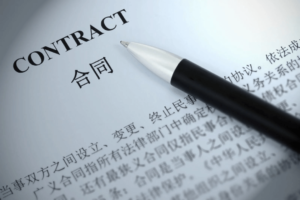International patent protection is crucial for inventors and businesses looking to protect their intellectual property on a global scale. Patents provide exclusive rights to inventors, allowing them to prevent others from making, using, or selling their invention without permission. However, obtaining patent protection can be a complex and challenging process, especially when it comes to international patents. This article will explore the importance of international patent protection and provide tips for successful patent drafting.
Table of Contents
ToggleKey Takeaways
- International patent protection is crucial for businesses looking to expand globally.
- Conducting a thorough prior art search can help identify potential patent infringement issues.
- Identifying patentable subject matter requires a deep understanding of patent law and industry trends.
- Drafting claims with a global scope in mind can help protect inventions in multiple jurisdictions.
- Avoiding ambiguity and vagueness in patent language is essential to ensure the patent is enforceable.
Understanding the Importance of International Patent Protection
International patent protection offers several benefits to inventors and businesses. Firstly, it provides a legal framework for protecting inventions in multiple countries, allowing inventors to prevent others from copying or profiting from their ideas. This can be particularly important in industries where innovation is highly valued, such as technology and pharmaceuticals.
Furthermore, international patents can also serve as a valuable asset for businesses. They can be licensed or sold to generate revenue, or used as leverage in negotiations with competitors. Additionally, having international patents can enhance a company’s reputation and attract investors who are looking for innovative and protected technologies.
On the other hand, not obtaining international patent protection can have significant risks. Without patent protection, inventors are vulnerable to having their ideas stolen or copied by competitors. This can result in lost revenue and market share, as well as damage to the inventor’s reputation. Moreover, without patent protection, it becomes difficult to enforce intellectual property rights in foreign jurisdictions, making it challenging to stop infringers from profiting from the invention.
Conducting a Comprehensive Prior Art Search
Before filing a patent application, it is essential to conduct a comprehensive prior art search. A prior art search involves searching existing patents, scientific literature, and other sources to determine if an invention is novel and non-obvious. This step is crucial because patents can only be granted for inventions that are new and inventive.
To conduct a thorough prior art search, it is important to use a variety of search tools and databases. These can include patent databases, scientific journals, and industry publications. It is also helpful to consult with a patent attorney or a patent search firm, as they have access to specialized search tools and expertise in conducting prior art searches.
When conducting a prior art search, it is important to be diligent and thorough. It is not enough to simply search for keywords related to the invention; it is also necessary to consider synonyms, alternative spellings, and related concepts. Additionally, it is important to review the claims of existing patents to determine if they cover similar inventions. By conducting a comprehensive prior art search, inventors can ensure that their invention is novel and non-obvious, increasing the chances of obtaining a patent.
Identifying Patentable Subject Matter
Not all inventions are eligible for patent protection. To be considered patentable subject matter, an invention must meet certain criteria. Generally, an invention must be new, useful, and non-obvious to be eligible for a patent.
Newness refers to the requirement that an invention must be novel and not disclosed in any prior art. Usefulness means that the invention must have a practical application and provide some benefit or advantage. Non-obviousness refers to the requirement that the invention must not be obvious to someone skilled in the relevant field.
To identify patentable subject matter, it is important to conduct a thorough analysis of the invention’s novelty, usefulness, and non-obviousness. This can involve reviewing existing patents and scientific literature to determine if similar inventions already exist. It can also involve consulting with experts in the field to assess the novelty and non-obviousness of the invention.
Drafting Claims with Global Scope in Mind
When drafting patent claims, it is important to consider global scope. Patent claims define the scope of protection granted by a patent and determine what others are prohibited from doing without permission. By drafting claims with global scope in mind, inventors can ensure that their patent provides protection in multiple countries.
To draft claims with global scope, it is important to consider the patent laws and requirements of different jurisdictions. Different countries have different patent laws and standards for patentability. By understanding these differences, inventors can draft claims that meet the requirements of multiple jurisdictions.
It is also important to consider the language used in the claims. Patent claims must be clear, concise, and unambiguous to provide effective protection. When drafting claims with global scope, it is important to use language that is widely understood and accepted in the relevant field. This can help to avoid potential issues with translation and interpretation in foreign jurisdictions.
Avoiding Ambiguity and Vagueness in Patent Language
Ambiguity and vagueness in patent language can have serious consequences. Ambiguous or vague language can lead to uncertainty about the scope of protection provided by a patent, making it difficult to enforce intellectual property rights. It can also make it easier for competitors to design around the patent or challenge its validity.
To avoid ambiguity and vagueness in patent language, it is important to use clear and precise terminology. It is also important to provide detailed descriptions of the invention and its components. This can help to ensure that the invention is clearly defined and understood by others.
Additionally, it is important to avoid using overly broad or generic language in patent claims. Claims should be specific and tailored to the invention, rather than using broad terms that could encompass a wide range of technologies. By avoiding ambiguity and vagueness in patent language, inventors can strengthen their patents and increase the chances of successful enforcement.
Ensuring Compliance with National and Regional Patent Laws
Complying with national and regional patent laws is essential for obtaining and maintaining international patent protection. Different countries have different requirements for obtaining a patent, including filing deadlines, formalities, and examination procedures. Failure to comply with these requirements can result in the rejection or invalidation of a patent.
To ensure compliance with national and regional patent laws, it is important to consult with a patent attorney who is familiar with the laws and procedures of the relevant jurisdictions. A patent attorney can provide guidance on the specific requirements for obtaining a patent in each country and help to navigate the complex process.
It is also important to keep up-to-date with changes in patent laws and regulations. Patent laws can change over time, and it is important to stay informed about any updates or amendments that may affect the protection of intellectual property. By ensuring compliance with national and regional patent laws, inventors can protect their inventions and avoid potential legal issues.
Including Detailed Descriptions of Inventions
Including detailed descriptions of inventions in patent applications is crucial for obtaining effective patent protection. Detailed descriptions provide a clear and complete understanding of the invention, its components, and its operation. This can help to establish the novelty and non-obviousness of the invention and support the claims made in the patent application.
When describing an invention, it is important to provide a thorough explanation of its structure, function, and operation. This can include detailed drawings, diagrams, and examples to illustrate the invention. It is also important to describe any variations or modifications that could be made to the invention without departing from its scope.
Additionally, it is important to describe any advantages or benefits provided by the invention. This can help to establish the usefulness of the invention and support its patentability. By including detailed descriptions of inventions, inventors can strengthen their patent applications and increase the chances of obtaining effective patent protection.
Considering the Impact of Translation on Patent Language
Translation plays a significant role in international patent protection. When filing a patent application in multiple countries, it is often necessary to translate the application into the official language of each country. However, translation can introduce challenges and potential issues with the interpretation of patent language.
To consider the impact of translation on patent language, it is important to use clear and unambiguous terminology. Patent claims and descriptions should be drafted in a way that is easily translatable and understandable in different languages. It is also important to consider any cultural or linguistic differences that may affect the interpretation of patent language.
Additionally, it is important to work with experienced translators who are familiar with patent terminology and the requirements of different jurisdictions. A skilled translator can help to ensure that the translation accurately reflects the original patent application and meets the requirements of each country.
By considering the impact of translation on patent language, inventors can ensure that their patents provide effective protection in multiple countries and avoid potential issues with interpretation.
Collaborating with Local Patent Attorneys
Collaborating with local patent attorneys can provide valuable support and expertise throughout the international patent drafting process. Local patent attorneys are familiar with the laws, procedures, and requirements of their respective jurisdictions. They can provide guidance on the specific requirements for obtaining a patent in each country and help to navigate the complex process.
Local patent attorneys can also assist with conducting prior art searches, drafting patent applications, and responding to office actions or objections from patent offices. They have knowledge of local practices and can provide valuable insights into the patentability of an invention in their jurisdiction.
When collaborating with local patent attorneys, it is important to establish clear communication and expectations. It is also important to choose attorneys who have experience in the relevant field and jurisdiction. By collaborating with local patent attorneys, inventors can ensure that their patents are properly drafted and protected in each country.
Maintaining Confidentiality Throughout the Patent Drafting Process
Maintaining confidentiality throughout the patent drafting process is crucial for protecting intellectual property. Disclosing an invention before filing a patent application can jeopardize its novelty and non-obviousness, making it difficult to obtain effective patent protection.
To maintain confidentiality, it is important to implement appropriate measures to protect sensitive information. This can include using non-disclosure agreements (NDAs) when discussing the invention with potential collaborators or investors. It can also involve limiting access to confidential information and using secure communication channels.
Additionally, it is important to be cautious when presenting or demonstrating the invention to others. Publicly disclosing the invention before filing a patent application can result in the loss of patent rights. It is important to consult with a patent attorney before making any public disclosures to ensure that the invention remains protected.
By maintaining confidentiality throughout the patent drafting process, inventors can protect their intellectual property and increase the chances of obtaining effective patent protection.
International patent protection is crucial for inventors and businesses looking to protect their intellectual property on a global scale. By understanding the importance of international patent protection and following the tips provided in this article, inventors can increase the chances of obtaining effective patent protection and prevent others from copying or profiting from their ideas. Conducting a comprehensive prior art search, identifying patentable subject matter, drafting claims with global scope in mind, avoiding ambiguity and vagueness in patent language, ensuring compliance with national and regional patent laws, including detailed descriptions of inventions, considering the impact of translation on patent language, collaborating with local patent attorneys, and maintaining confidentiality throughout the patent drafting process are all essential steps in successful patent drafting.
If you’re interested in understanding the complexities of drafting patents for international protection, you may also find the article “The Benefits of Filing a Utility Patent and an Invention Patent at the Same Time in China” informative. This article explores the advantages of pursuing both utility and invention patents simultaneously in China, providing valuable insights into maximizing patent protection strategies. Check it out here.
Contact us if you need help with drafting of contracts that follows Chinese laws and are enforceable in China, background investigation of Chinese companies, protecting patents, trademarks internationally and in China, verification of contracts to the law in China, or help with other legal challenges that you have in China.
If you require our assistance or have further questions about our services, please do not hesitate to contact our Customer Relationship Managers Jan Erik Christensen, at janerik@ncbhub.com or Milla Chen, at huimin.chen@ncbhub.com. We look forward to hearing from you and helping your business succeed in China.








